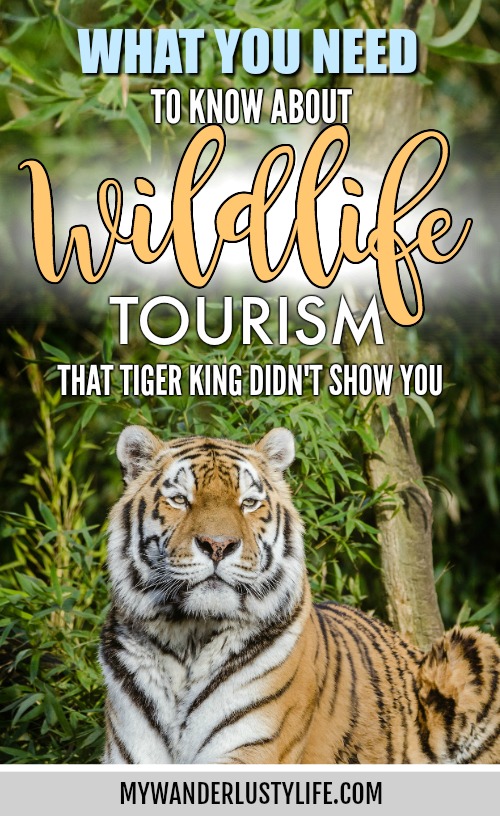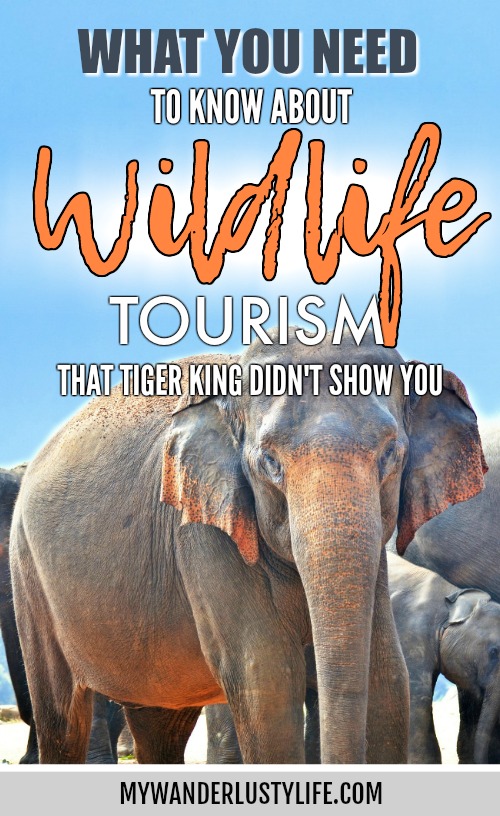Yes, I worked at Big Cat Rescue. And I’m here to talk about how the insanity portrayed on the bizarre Netflix documentary Tiger King relates to travel.
What you need to know about Tiger King
First of all, lemme just start by addressing my embarrassment at having even a loose connection to these… characters. I like to think I live a pretty sanitary life. I’m a friend to the four-legged. I’ve never done meth. I’ve never found myself murder-adjacent. I wear only one belt at a time.
In fact, for most people, I assume a viewing of Tiger King is just one seemingly endless game of Never Have I Ever, which must be why it’s so popular. Y’all, people be having done these things!
When I first started seeing people talk about a show called Tiger King, I thought for sure it was another desperate “reality” show. Maybe one where contestants compete to see how much raw meat they can eat before they die. Winner gets a wife! If only this was as disturbing as it got.
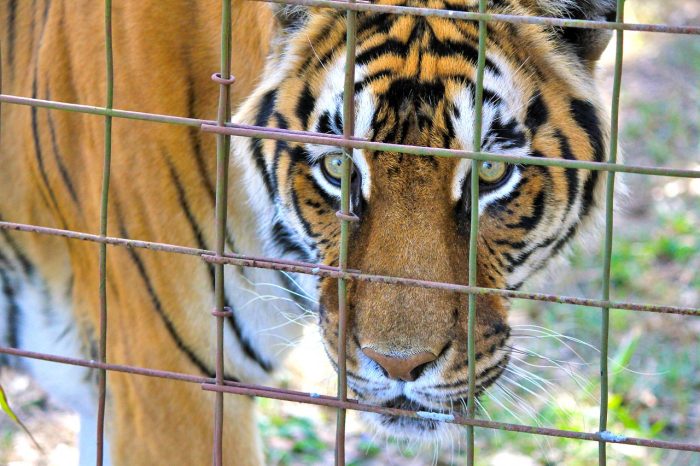
What Tiger King missed
Instead, what I found was–okay, yes, it was little more than a sensationalized reality show and the reason I took 18 showers this week. However, it was also a missed opportunity to really bring to light some serious issues many travelers may not even know they’re supporting.
The series should’ve focused on the horrors of wildlife tourism, speed breeding, animal abuse, and, yeah, maybe a little more on the sex cult (!!!). Instead, all of that, though blatantly shown on screen, was somehow overshadowed by the meth-driven drama surrounding the world’s nut-jobbiest nutjob.
Instead of viewers rallying behind the animals (the way they did after Blackfish) they’re borderline glorifying the man who should’ve come out of this the world’s greatest villain. Like………. did we not watch the same show?
Look, I know we’re all quarantined and slowly but surely losing our minds, but can y’all stop dressing up like Joe Exotic like he’s some kind of super hero? Meth Man! To the rescue! Lemme grab my EMS jacket first! It magically turns me into a doctor!
(And while we’re at it, maybe stop further torturing animals in the man’s name? Methinks the internet wishes you would stop speaking for it.)

Who’s the villain?
Somehow, the unanimous villain of the show is Carole Baskin. There’s no doubt she’s incredibly unlikeable, but how is she faring worse in the public’s eye than the guy who ripped a crying tiger cub through a chain link fence just minutes after being born?
And that’s just one of the numerous incidents that also just so happened to be caught on camera. Now while I’d love to take the time to list them all out for you, I don’t think this lockdown’s gonna be long enough.
Why not the guy who stuffed tiger cubs into suitcases and rolled them through Las Vegas hotels? Or the guy who sliced open snakes and stuffed them with cocaine and “didn’t care whether they lived or died?” Or the guy who forces women to sleep in roach-infested barns and call him “Lord?” That one just gave me an honest-to-goodness chill.
One thing to keep in mind: we can only form opinions based on what the editors and directors want us to see. If you think Carole Baskin killed her husband, it’s because they designed it to look that way. (I’ll admit, the sardine oil did. not. help.) So maybeeee Carole Baskin killed her husband, but Joe Exotic and the rest of them undeniably abused animals and we all saw it.
However, having personally spent time at Big Cat Rescue, I have the advantage of knowing some of the reality behind this reality show.
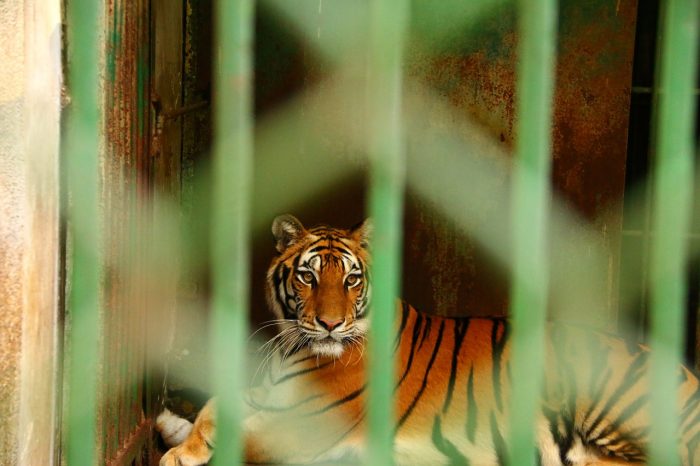
GW Exotic Animal Park vs. Big Cat Rescue
One popular opinion is that Carole Baskin and Joe Exotic are not different when it comes to the animals. Honestly, I don’t understand this. I kinda thought we were all watching the same scenes unfold? Is your Netflix different than my Netflix? Here is how GW Exotic Animal Park and Big Cat Rescue differ.
GW and other facilities like it:
- Indiscriminately and carelessly breed animals for profit
- Offer “cub petting” and other exotic animal interactions
The problem with this business model is that when those cubs get too big to interact with the public (which is at only 12 weeks old) they’re either killed, sold to some halfwit to keep as a house pet, sold for parts, or dumped at the only place that will take them—an animal sanctuary. Breed, profit, euthanize, repeat.
And with tigers being able to birth up to three full litters of cubs each year, obviously there aren’t enough sanctuaries to keep up. Bob Barker warned you about this… s’all I’m saying.
Cub petting
─
For the gist of why cub petting is so awful, see this short video from a reliable and much better looking source. For the bigger picture, check out this important read on the reality of tiger petting zoos.
Because GW and places like it rely on high-priced close-up encounters with the animals, these animals must be trained and maintained in a way that won’t result in the wild animal harming a human. (Doh!)
To do this, the animals suffer things like malnutrition or just plain starvation, poor living conditions, outright physical and mental abuse, drugging and declawing, and more. As you saw in Tiger King, they’re also denied proper veterinary care and, in this case at least, fed a mix of expired meats and only a small percentage of what their bodies require.

Big Cat Rescue
On the flip side, Big Cat Rescue is an animal sanctuary, the kind that takes in:
- Retired performing circus animals
- Animals surrendered after the owner realized, for instance, that lions and tigers don’t make great house pets
- Animals bred for their fur
- Cats that were once used in “cub petting” schemes after they became too big
- Just to name a few
The idea behind sanctuaries is that they don’t breed, don’t force the animals to perform, and care only about giving the animals a safe place to live out the rest of their lives. They also work to strengthen animal protection laws.
The reason Big Cat Rescue and other sanctuaries like it charge for admission and offer tours is to make up some of the costs of caring for big cats and running their retirement home, not to exploit the animals for profit. Non-profit facilities like this one must rely on private funding, donations, and revenue from public educational tours.
The fact of the matter is, if these cats didn’t have a sanctuary like Big Cat Rescue to go to, 100% of them would end up prematurely dead, further abused, and/or cushioning the feet of visitors at the De Vil mansion. Animal sanctuaries like Big Cat Rescue are the ones cleaning up the messes of such reckless operations like GW Exotic Animal Park.
The two kinds of operations couldn’t be more opposite—a fact easy to overlook given how unlikeable, untrustworthy, and just straight up cuckoo their respective owners are.
Animals in the circus
─
To learn more about how circus animals are treated behind-the-scenes and why using them this way is so awful, check out this article from the MSPCA.
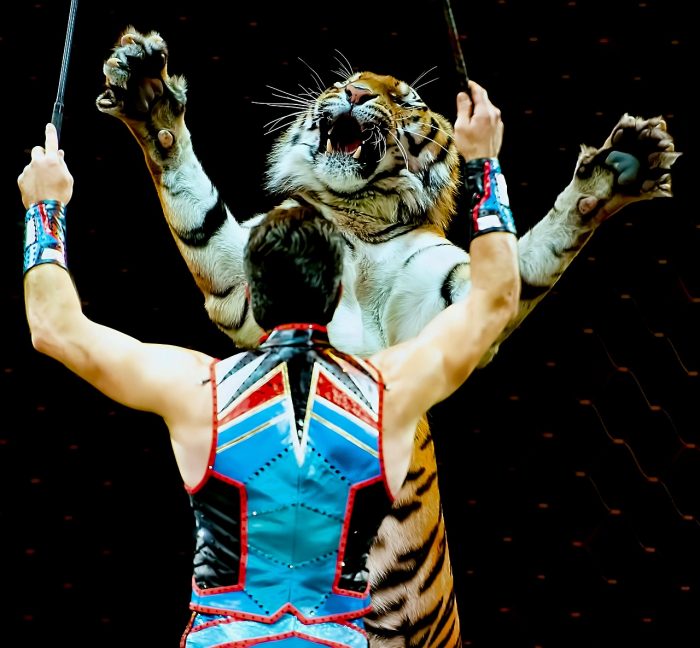
That time I worked at Big Cat Rescue
I was living in Clearwater, Florida and it was the summer before I was to start the third year of my second college degree, in the marine biology department at USF. If that’s a part of my life you never knew about, let’s just say the story of why it didn’t work out is longer than my actual marine biology career and move on.
Because I was majoring in zoology with a focus on conservation and rehabilitation, but more importantly because of my desire to care for animals in need, I’d spent the last few years volunteering at various zoos, aquariums, and wildlife refuges while I got my studies on.
The irony of the fact that I took out loans to go back to school to work for years without pay is not lost on me. (What a time to be alive!) In exchange for my time, this provided me a way to acquire valuable, hands-on experience I could apply to my future career as a travel blogger. (Are you doing what your degree is in? Then shut it.)
I prepared meals for primates and de-beaked squid to feed to injured sea turtles. I shoved pills into fish for penguins and cleaned the exhibits of everything from orphaned baby opossums to capybaras to black widow spiders. One summer I researched the best ways to freeze frog sperm.
I’ve been peed on, pooped on, screamed at, slapped, quilled, and licked. When pursuing your dreams, you pay your dues, even if no one pays you. And that let me to the Big Cat Rescue in Tampa.
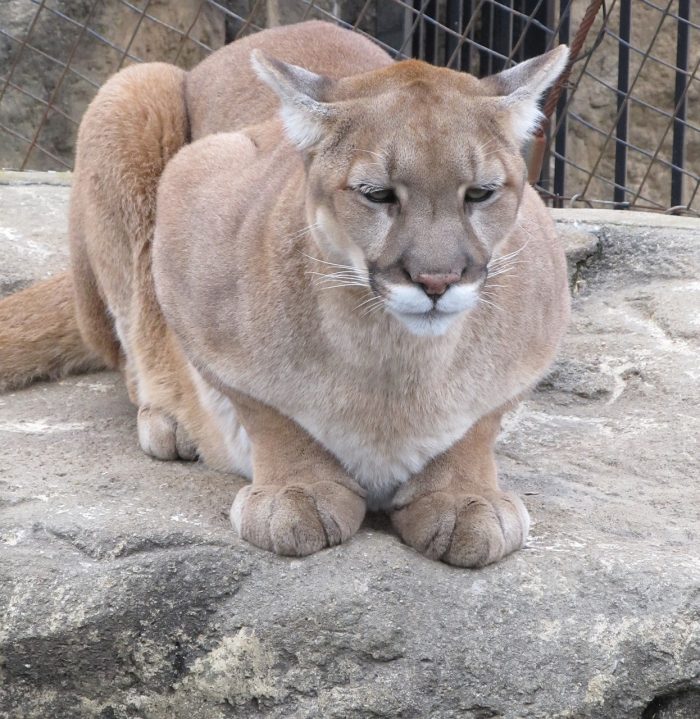
Volunteering at Big Cat Rescue
Words like “sanctuary” and “rescue” and “mission” drew me in over other places. Taking in injured, abused, and abandoned animals is, and always will be, so much more attractive than facilities that breed recklessly and greedily. Adopt, don’t shop—it’s right there on your bumper sticker!
I volunteered at Big Cat Rescue for a couple of months as a Red Shirt—a keeper trainee who also co-lead tours—the lowest on the tiger totem pole. I’m pretty sure no one there even knew my name.
I didn’t work at Big Cat Rescue all that long, but I did learn a lot while I was there. So much of that has imprinted itself permanently into my brain and changed my views forever.
It was during my time at Big Cat Rescue I learned all about the problems associated with exotic animal ownership and backyard breeding, the horrors of roadside zoos, and the evils of “cub petting” and other types of wildlife tourism.
Wildlife tourism
─
For a great introduction to wildlife tourism, check out Natasha Daly’s article for National Geographic: Suffering unseen: The dark truth behind wildlife tourism
It was at Big Cat Rescue that I learned:
- What happens when an animal is forced to perform in zoos and other shows
- Why you should avoid roadside “zoos” and other makeshift, unlicensed animal facilities
- The long list of reasons having an exotic animal as a pet is a monumental mistake–if, for some reason, you couldn’t come to that conclusion yourself (Maybe he’s born with it, maybe it’s methamphetamine.)
- How getting a selfie with a tiger cub directly results in Joe Exotic dragging a crying newborn tiger cub through a chain link fence
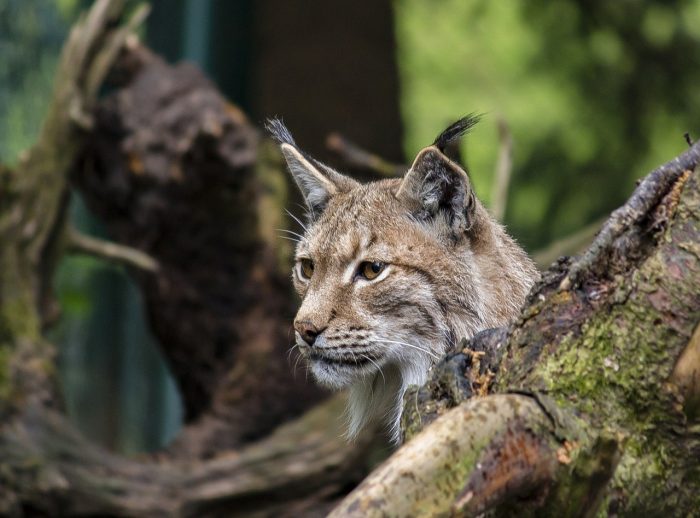
My impressions of Big Cat Rescue
As far as my experience of actually working there, I have nothing but congenial, uneventful memories that thankfully do not include my boss talking about his husband’s balls while he’s inexplicably dressed like a priest.
I learned a lot of important information on topics I feel more people should be aware of and I was able to help educate the public on these important issues. I was able to do my part to help some needy cats and I knew upfront they weren’t going to pay me for any of it.
Fun fact
─
Unlike Tiger King would have you believe, I’d applied to volunteer at Big Cat Rescue having full knowledge of the word’s meaning. I am from the Volunteer State after all. And I feel now’s as good a time as any to point out that the two universities I attended were the Volunteers and the Tigers. Put that on your plate!
I trusted Big Cat Rescue’s mission and was never given a reason not to. Nothing during my time there felt dangerous, suspicious, or “off.” No one lost any limbs. No one forced me to get breast implants. Not a single person fed me expired meat.
Sure, the grounds are “rugged.” But as you’d expect from any reality show, they wildly overplayed the “poor state” of the facility. (A quick look at Tripadvisor visitor photos could tell you that.) And, for what it’s worth, I’d argue that big cats actually prefer a weedy, overgrown environment if that were the case. But I’m not a cat.
The employees, the guests, and the animals were all treated well, from my personal point of view. But I’m not an omniscient being.
Big cats as pets
─
For more on (what I thought were obvious) reasons why keeping big cats as house pets is a colossal bad idea, check out this article from the BBC on the pet tiger problem in the United States.
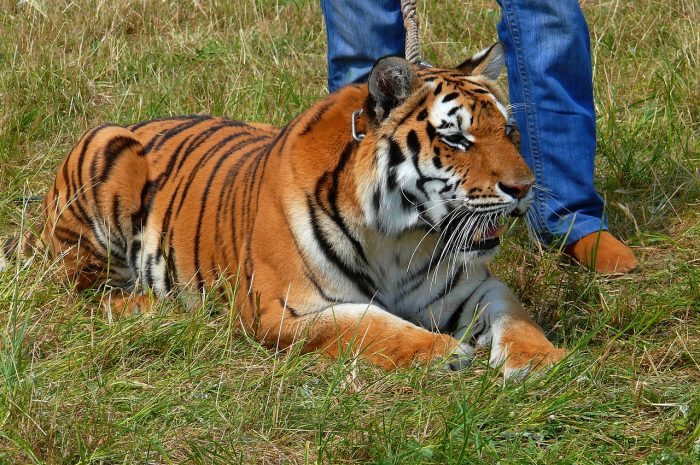
Carole Baskin
I’m not sure if I ever met Carole Baskin (if you’ve met one crazy cat lady, you’ve met them all—and I’ve met a lot of crazy cat ladies). I don’t recall hearing anything about her missing husband. Her ill-gotten millions and her feud with Joe Exotic never came up.
Questionable business decisions from 20 years ago and video footage so old you need a VCR to watch it don’t concern me. (I am a little concerned with her general okay-ness with getting into a truck at night with a strange man holding a gun, but that’s just speaking as a woman.)
We’ve all made mistakes… and learned from them. But not all of us have burned down a building full of alligators. Excuse me, allegedly burned down a building full of alligators.
What it comes down to is Carole Baskin’s personal drama never factored into my time volunteering at Big Cat Rescue and I didn’t see any evidence that it affected the cats’ well-beings either. Can the employees or animal residents of the GW Exotic Animal Park say the same? (Answer: not a chance in Hell.)
Also check out
─
Leaving Cats at Home While on Vacation: A Complete Guide to Safety & Sanity
What I don’t like about Big Cat Rescue
I’m not blinded, don’t get me wrong. No one has pulled the flower crown over my eyes. I’m not saying Big Cat Rescue is perfect and I’m not saying that Carole Baskin isn’t profiting from her non-profit. But even if she is, who cares? If the cats are healthy, happy, and safe, very little else should matter.
However, there is one thing that really gets my goose and that is the fact that Big Cat Rescue is not ADA accessible. Not only that, but they charge extra for those who need to take the tours via their golf carts. I understand all the other charges that come with visiting the Big Cat Rescue, but I cannot get on board with this. This is Florida for Christ’s sake. For the love of lions, pave your paths!
What Big Cat Rescue needs to work on
Should more of Big Cat Rescue’s money go towards upgrading and maintaining the facility? Absolutely. Should they pay more of the employees? Definitely. Should visitors with disabilities have to pay extra for a tour? Hellll no.
Big Cat Rescue is not perfect but, as we’ve seen, it could be so, so much worse. The Walmart meat truck was a lot to process.
Not-so-fun fact
─
I’ve also seen one of Bhagavan ‘Doc’ Antle’s tiger shows as a patron of ye olde local Renaissance faire. He and some of his female companions from Tiger King performed a show called “Tale of the Tiger” at King Richard’s Faire in Carver, MA from 1982 to 2014. This show featured tiger cubs each year and a massive and unnatural liger. His wildly unethical operation was ultimately the reason I never returned to King Richard’s Faire. (The tiger show has since been replaced with a canine act.)
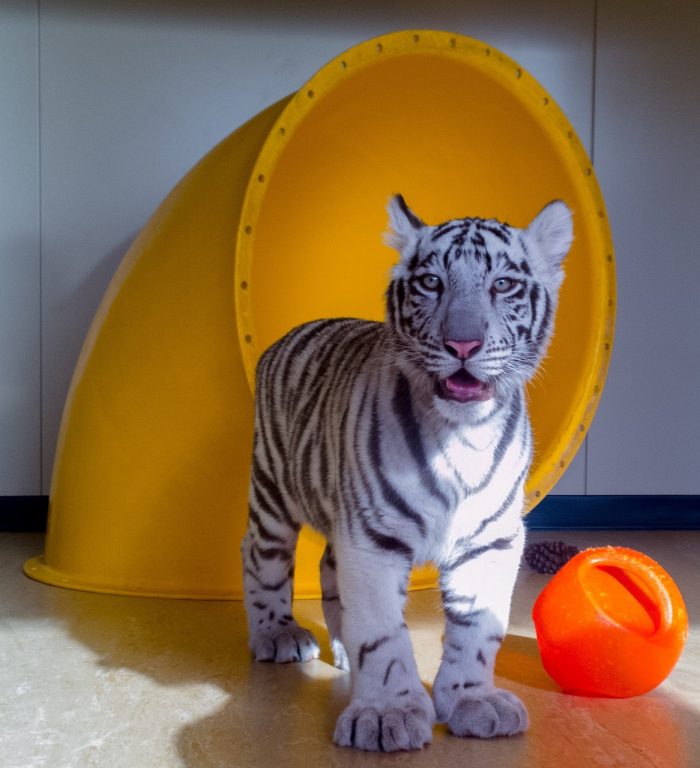
How Tiger King relates to travel
One thing Tiger King does a mediocre job of is showing how horrible roadside “zoos” and cub petting operations are behind the scenes. Actually, wait. All of this happened very much in front of the scenes. And this is just a glimpse into the horrors of wildlife tourism.
People want to do and see exciting things on vacation and what they’ll be able to post on social media greatly affects their decisions and activities. Many times these activities involve animals. A few examples are:
- playing with lion cubs
- riding elephants
- swimming with captive dolphins
- posing with full-grown tigers
- and I’ll cover more in a bit.
Because of this, these kinds of businesses specifically target travelers. And since you’ve watched Tiger King, you simply can’t claim ignorance anymore.
One thing I hope people take away from Tiger King is that these aren’t isolated incidents. This kind of stuff doesn’t just happen at the GW Exotic Animal Park. These horrors are far more widespread than you may realize.
Swimming with dolphins
─
Before you head for sunnier weather, be sure to check out this article from the Humane Society on why you should avoid swim-with-the-dolphins attractions.
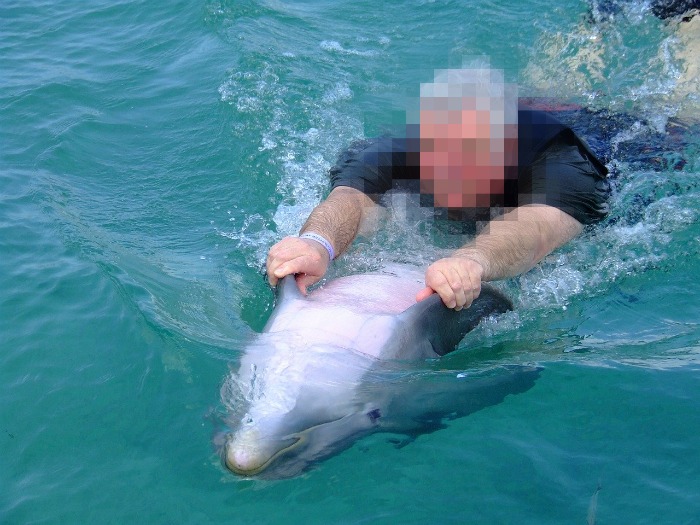
Wildlife tourism
Visiting Thailand? Here, ride an elephant!
Coming to the Caribbean? Here, swim with dolphins!
Enjoying Bali? Here, put this monkey on your shoulder!
Visiting Costa Rica? Here, hold this sloth!
You’ll look so cool on social media! Experience of a lifetime!
What may seem like an exciting way to spend some time on vacation can actually be one of the easiest and most direct ways to support animal abuse. Wildlife tourism is promoted by everyone from shiny resorts offering the chance to be “kissed” by a dolphin to grungy snake charmers on street corners. Though this may seem harmless or even sometimes helpful, it’s actually incredibly damaging.
The Wildlife Conservation Research Unit out of the University of Oxford says:
We found that up to 4 million tourists who visit non-zoo tourist attractions involving wildlife are likely to be contributing to large-scale animal welfare abuses and declines in species’ conservation status – and are typically unaware of their impacts.
It happens everywhere
It happens at places like the infamous Tiger Temple in Thailand who bred tigers for #tigerselfies, then butchered them for parts to sell on the black market. Authorities shut down the Tiger Temple in 2016 but there are about as many of these facilities still operating in Thailand as there are skeletons in Jeff Lowe’s closet.
It happens at places like South Africa’s Lion and Safari Park where you can pay for “lion cub interactions” and “cheetah walks.” (But not until you read through the 19-page document that begs you to overlook some of their business practices, attempts to guilt you into these activities, uses the fact that schoolchildren visit as justification, and describes how they didn’t want to offer these things, but they had to because they’re all tourists want.)
It happens at places like the Maesa Elephant Camp in Chiang Mai that puts on multiple daily elephant shows and sells elephant rides, elephant baths, elephant paintings, elephant training sessions, and the chance to hang out with baby elephants.
Taming an elephant
─
In order for elephants to become submissive and acceptable for human interaction, they must first be trained through a process called ‘crushing.’ This involves separating them from their mothers at an early age then restraining them inside a cage, bound by their arms and legs so that they can’t move, kick, or raise their heads. The elephants are then beaten, stabbed with bull hooks, burned, slashed, and deprived of food, water, and sleep until they “learn” to obey commands. But you know, #YOLO! Click here for more on why you should never ride an elephant.
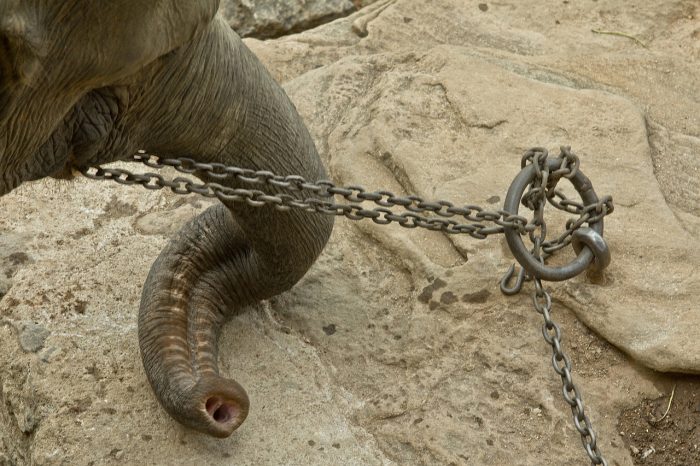
The issue with Instagram
And all this for what? Because people want sexier Instagram pics? More eyes on their photos, more followers, more people thinking they’re exciting? Turns out, this behavior directly encourages everything you saw on Tiger King.
Natasha Daly, in her eye-opening article for National Geographic writes:
Wildlife tourism isn’t new, but social media is setting the industry ablaze, turning encounters with exotic animals into photo-driven bucket-list toppers.
Their selfies—of swims with dolphins, encounters with tigers, rides on elephants, and more—are viral advertising for attractions that tout up-close experiences with animals.
For all the visibility social media provides, it doesn’t show what happens beyond the view of the camera lens.
Even searching for things like #tigerselfie or #elephantride on Instagram will serve you a warning message about the dangers of such activities. Even Instagram, the soulless overlord you’re doing this for in the first place is saying DON’T DO THIS.
You wouldn’t help promote a puppy mill, so why support a tiger cub mill? It’s 👏🏼 the 👏🏼 exact 👏🏼 same 👏🏼 thing. 👏🏼
Instagram
─
Instagram isn’t all bad. Follow accounts like @insta_wrecked who works to expose wildlife and tourism issues created by Instagram. And accounts like the World Wildlife Fund who promotes conservation.
Think before you ‘like’
Take away the demand and there won’t be a need for the supply. I may have only taken a semester’s worth of economics but no one knows this better than a travel writer during a stay-at-home mandate.
Just pretend every time you ‘like’ one of those photos a trigger-happy meth head drags a crying newborn tiger cub through a chain link fence. Every time you sign up for an exotic animal encounter Bhagavan ‘Doc’ Antle brainwashes another vulnerable woman into low-key sex slavery. Every time you comment “OMG jealous!” another tiger cub gets crammed into a carry-on.
Every time you pay to pet a tiger cub your money goes directly to financing animal abuse. Directly to keeping chimpanzee best friends apart for ten years. Joe Exotic:
I finally moved my two chimpanzees last week. Probably one of the hardest days of my life. They sat in cages next to each other for over ten years. And we moved them to the Great Apes Center in Florida. And in two days, they were out in a big yard hugging on each other.
Did I deprive them of that for ten years? Yep. I deprived them of being chimpanzees.
Did I do it on purpose? No, I just got wrapped up in having a zoo.
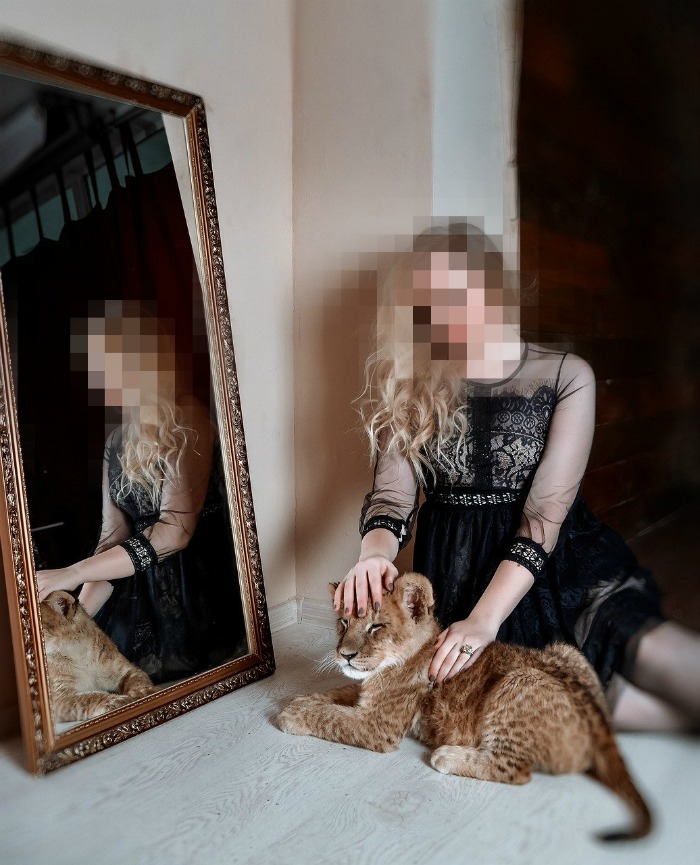
We must spread the word
The problem is, this information is still not common knowledge. People assume that if a “zoo” is offering the chance to play with tiger cubs, it must be okay. We always want to believe animals are being well taken care of. How could someone not want to protect them?
My hope is that with the popularity of Tiger King more people will wake up to the blatant, behind-the-scenes animal harm that takes place around the world… for our benefit.
Many times, you may not even know this kind of behavior is happening. A good rule of thumb is that if animals are involved in your vacation in any way, there’s always a chance it’s not on the up-and-up. The more exotic the animal, the worse. Please do not pay to hug a beluga whale.
Practice animal distancing
─
Besides belugas, you should never pay to hug an exotic animal. Two big players in this trade are koalas and sloths. For more information, find out here why you should never pay to cuddle koalas or to take sloth selfies.
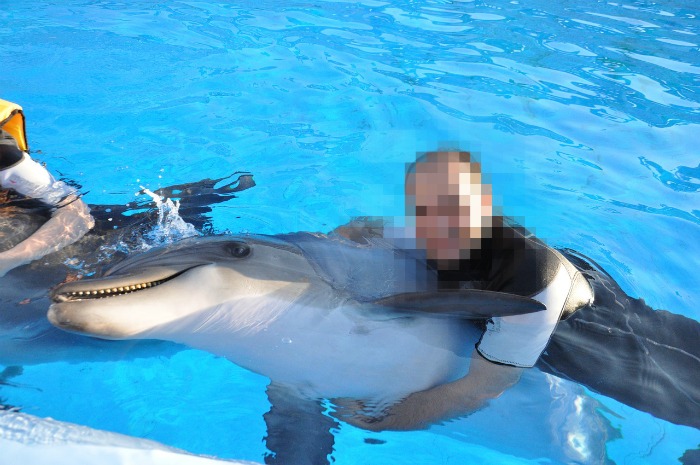
What you can do
Our instinct as animal lovers is to want to be near them and interact with them. But we have to understand that if we really love them, we need to protect them by just staying the hell away. (This message, approved by house cats everywhere.)
That being said, there are some activities you can participate in on your travels as an animal lover.
Sanctuaries over zoos
Opt for sanctuary-type facilities over zoos, but make sure they’re not just using the word “sanctuary” in an evil attempt to lure you in. Do. your. research. Two Tampa-area examples would be:
- the Clearwater Marine Aquarium, a facility dedicated to rescue, rehab, and release
- Tampa’s Manatee Viewing Center, a cool way to observe a weird wildlife phenomenon
Choose the right zoos
If you do visit zoos, visit only AZA-accredited ones. The AZA is the Association of Zoos and Aquariums and they are the respected authority on both. They maintain strict guidelines in regards to animal care and prioritize the well-beings of the animals.
Visiting an AZA-accredited establishment is your best bet in knowing you’re visiting a place where the animals are the top priority. You can find the list of accredited zoos and aquariums here.
Just say no to animal interactions
Anytime a company or individual offers any kind of animal interaction where the animal is doing something out of their ordinary behavior, please think twice. Ask yourself, “Would this animal be doing this if I weren’t paying for it?” If the answer is no, just don’t go.
Some examples are:
- Drinking from a bottle
- “Kissing” you on the cheek
- Pulling you around an enclosed pool
- Letting you rub its belly
- Going on walks with you
- Dancing or performing tricks on a chain
- Being lured from a basket by the sweet, sweet sounds of a pungi
- Painting pictures for you
- Hugging you, to name a few
Most importantly, know that if something seems too cool to be true, it definitely is. Always look for red flags and trust your animal-loving gut.
Snake charming
─
It’s not just the big animals that suffer at the hands of wildlife tourism. Even the harmless-looking act of “snake charming” in places like India and Morocco is a brutal practice. Learn more in this article on the behind-the-scenes brutality of snake charming.

Do your research
If a certain activity interests you, please please please do your research on the company offering it. Research your ass off. You may need to delve into the depths of Google’s second page. In your research you’ll want to:
- Look for accreditations, certifications, and licenses
- Then examine the legitimacy of those
- Check out their mission statement
- Read Tripadvisor reviews to sniff out any red flags and look at user photos for evidence of cruelty (chains, harnesses, whips, poor living conditions, etc.)
- Analyze the description of the activity for anything fishy
- Consider whether or not the animal would naturally be doing that activity
- Determine whether the animals are captive. Always opt for a “fly on the wall” experience. Safely and unobtrusively viewing wild animals in their natural habitats is always preferred to captivity.
- Examine their business model—Are they for profit? Do they support sustainability?
Ask questions like:
- Do they offer any kind of animal interaction? Even if you’re not partaking, your dollars will still fund this vicious cycle.
- Do they promote and kind of animal performance or show?
- Is your gut telling you this may be a bad idea? (When in doubt, don’t.)
- Do any of the reviews mention unsavory practices or poor conditions?
- Does the gift shop sell animal print thongs? Is the owner passing out condoms with his face on them? Are they offering a discount because a tiger bit off an employee’s arm that day? If so, just say no!
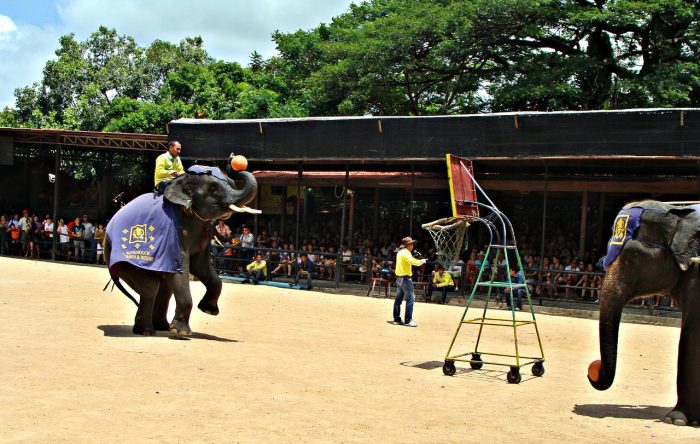
I’m not perfect
Look, I’m not perfect. None of us are. I have a lower-back butterfly tattoo and a Pringles addiction. I’m not a vegan. I visit zoos every now and then. Sometimes they made me sad, sometimes they give me hope, but they always make me think. Like many, I’m still trying to find where I fall among all this.
In a perfect world no human would ever have any contact with any animal, but such is not life. While the majority of these issues are black and white (black and orange?), there are still many gray areas. Like everyone else, I’m learning as I go.
The least we can do is learn as much truth on these topics as we can and share what we know.
Share this info, pin me:


